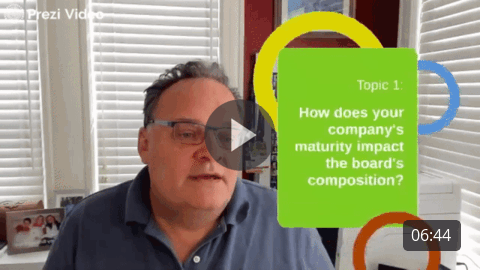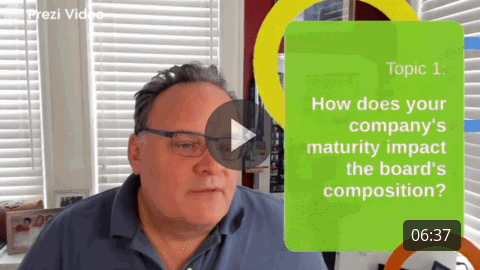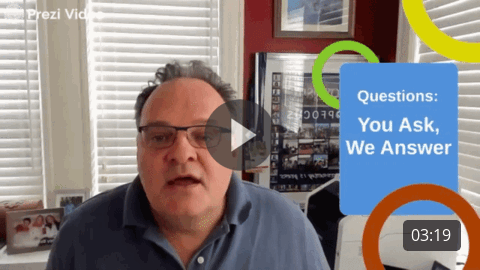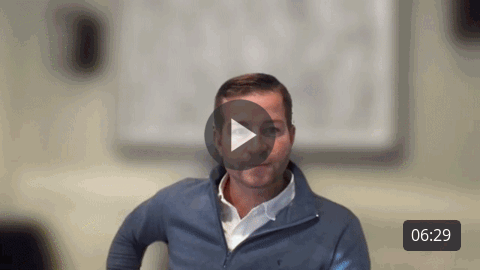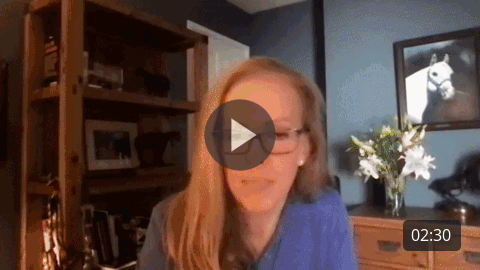How to prepare for your next board meeting
Being tapped to present to the board or work on the board presentation can be stressful for even the most veteran RevOps leaders. What metrics do you include? How do you create a compelling narrative? How much detail is too much? As the board meeting approaches, these are likely the questions you’re asking yourself.
Hear from a group of RevOps veterans, Ann Neir, VP of Revenue Operations at Cockroach Labs, Toby Carrington, EVP of Global Operations at Seismic, and Kory Knell, SVP of Operations at RainFocus, about how to prepare for a board presentation. Once completing this article, you’ll have an understanding of who’s typically on the board at each growth stage, what they care about, how they can help, and how to create a compelling presentation that showcases the work your team is doing.
How does a company’s maturity impact the makeup of the board?
Early in the company’s formation, the board was small, mainly consisting of founders and a few early investors. As you mature, the board grows and will include more investors and specialists who help with specific business aspects.
The metrics the board cares about also shifts as the company matures. The board wants to hear about hiring key positions and net sales early on. At a higher maturity, when companies are also starting to think about going public, retention and metrics such as the rule of 40 and net dollar retention become more top of mind.
What metrics does the board want to see?
When preparing board metrics, you need to start with the company’s financials. As mentioned, Net Retention and Rule of 40 are always good to include. It also helps to show leading and lagging indicators that forecast what’s on the horizon for the organization.
In addition to these metrics, show them the information they can’t readily see. For example, is there something underlying affecting your win rate or deal velocity? Adding this context is essential for showcasing why your team prioritizes specific initiatives. When creating your presentation for the first time, it’s crucial to understand what the board wants to see and include these metrics in each meeting to create a benchmark and showcase trends.
How can you weave strategy into the presentation?
Building on the metrics, you need to create a narrative for your board. Use your annual plan and most significant initiatives as a framework. This framework may involve discussing OKRs or Vision, Strategy, Execution, and Metrics, but it should be something consistent that you can always talk to and anchor the board discussion around.
One strategy is to start with a slide outlining the OKRs and an annual plan to set the stage and provide context on how the company is moving toward these goals.
Another way to structure the board discussion is to outline the main company objectives instead of the department, then have teams involved in each goal recap their progress. This format makes it easier for the board to understand the progress of these larger organizational goals.
How do you establish RevOps processes to support board presentations?
Some teams, especially at less mature organizations, grind to a halt and spend up to a week creating metrics for the board. How can you set up standard dashboards to mirror what you present to the board?
Establish metrics that build on one another at each level. Team metrics should role up to department metrics, that role up to organizational metrics which you then present to the board. If your board asks for entirely different metrics from what your team is reporting on, it’s time to reevaluate what you’re prioritizing to run the business.
Scheduling executive meetings, employee surveys, and other initiatives accordingly around the board meeting is also helpful. This enables each activity to build on one another leading up to the board meeting. It also ensures that the board discussion is based on the latest company pulse and updated data for an informed and insightful conversation.
What differentiates a good presentation from a bad one?
To set up a good board presentation, you’re prepared to discuss trends and challenges you’re seeing in the business. Send the presentation well in advance, including appendices that provide additional detail. The board meeting is not a time to try and understand the data as a working session – present the trends you observe in a way that’s easy to understand and offer your prognosis. Focus on discussing the most essential, critical topics. It’s important to remember that members of your board are interested in your company’s success – they are here to help you solve problems by tapping into their networks of resources.
Share a tip on presenting for an aspiring RevOps leader.
Ann Neir
“Nail the basics. You’re building out strategic infrastructure that is taking your company from the level they’re at now to the next… When you nail the basics daily and how you’re driving the future of the business, you have the context of strategy.”
Kory Knell
“Set Expectations, it’s a journey to get to some of these ideal end states. A lot of the work going into a new company in the early days considering the metrics and process is not something you can gloss over.”
Toby Carrington
“You get to the level you sound like. A board meeting is not a dog and pony show; the board expects you to know what you’re talking about. Focus the meeting and presentation on higher-level strategic topics. If you want to be taken seriously as an Ops leader, you don’t spend the entire time you speaking on how you calculated these metrics or discussing tactics.”
Audience Question
When there’s a new lead investor, is there a shift in expectations during the board presentation?
When a new investor joins, have a discussion on what they expect from a board meeting and the metrics they need to see. The transition will vary depending on who the new lead investor but there typically won’t be a drastic change. It’s usually valuable for a new set of eyes on your company’s data in helping identify areas for growth.
Is there something you’ve seen or done that you would never do again during a board meeting?
One panelist got caught up in explaining how the metrics changed from the previous board meeting. They mixed the old and new metrics, which caused confusion and time spent explaining the change took away from having a constructive discussion. In hindsight, the best strategy is to showcase the usual metrics and new metrics separately. This strategy gives the board what they want and allows you to talk about updated metrics.
How do you deliver bad news to the board?
When conveying bad news to the board, it’s crucial to be transparent in falling short and back up your discussions with data to showcase challenges. Talk about the trends you’re seeing and what’s impacting the areas that are not meeting expectations. It’s important to understand that everyone on the board wants to help your company succeed. The fastest way to lose trust with the board is to not report the bad news.
Recommendations for team members wanting to help with board presentations?
There are many ways that team members can begin getting exposure on board reporting. A suggestion for aspiring individuals to reach out to executives currently presenting to the board and offer to work on preparing the presentation. Asking for the opportunity and showing interest builds visibility within the organization, and makes it clear that you’re interested in being a part of the board reporting process.
How do I get started with preparing my board presentations?
After hearing from these experienced executives, you have a better understanding of your board’s composition, what they want to see, and how to build a constructive presentation. You know how to decide on metrics that make for a clear report-out and create a compelling narrative.
Pair that with a few internal dry runs and you’re ready for your next board presentation.
To ensure your presentation includes everything the board cares about, use tips from our last panel that dive deeper into creating board presentations. This panel explores some of the same topics discussed in more depth.
While creating your presentation, you may discover your not capturing all the metrics you want to present to the board in a single, easily manageable dashobarod. Creating a clear and concise dashboard can be challenging for even veteran RevOps leaders. Take your reporting chops to the next level with our upcoming Salesforce Reports and Dashboards workshops. Our founder and resident Salesforce guru, David Carnes, leads workshops after each new Salesforce release. The 2 day course covers everything you’ll need to build effective reports and streamlined dashboards.

